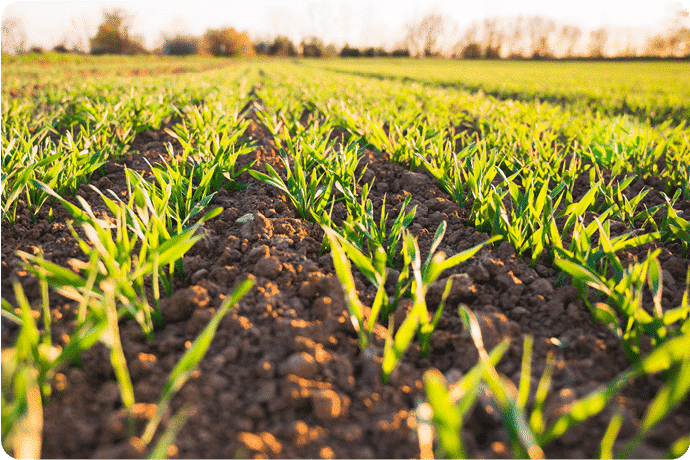The Function of Biotechnology in Agriculture Advancements
The Function of Biotechnology in Agriculture Advancements
Blog Article
Optimize Plant Development and Yield With Costs Water Soluble Polymers for Agriculture
Premium water-soluble polymers have arised as an encouraging device in this pursuit, providing an array of benefits that can reinvent the means we come close to plant farming. By addressing important elements such as dirt structure, water retention, and nutrient shipment, these polymers have the prospective to unlock new degrees of performance and yield in farming production.
Advantages of Water-Soluble Polymers
Water-soluble polymers supply a variety of advantages in agricultural applications, boosting dirt framework and water retention efficiency. These polymers, when put on the soil, can dramatically enhance dirt aggregation, decreasing disintegration and raising overall dirt wellness. By boosting soil structure, water-soluble polymers produce a more favorable setting for root growth and development, eventually leading to boosted plant yields.

Better Soil Framework
Offered the demonstrated advantages of water-soluble polymers in boosting soil quality and water retention, a vital aspect that stands out is the significant influence these polymers have on restructuring the soil make-up. Costs water-soluble polymers play a crucial duty in improving soil structure by promoting dirt aggregation and stability. By enhancing dirt structure, water-soluble polymers assist avoid soil compaction, which can limit root development and water motion.
Enhanced Water Retention
Enhanced water retention can be achieved with the usage of costs water-soluble polymers in agricultural techniques. These polymers have the one-of-a-kind ability to soak up and preserve big quantities of water within the dirt account, developing a tank that plants can access throughout periods of water stress and anxiety.
Costs water-soluble polymers work by forming a gel-like structure when blended with water, raising the soil's water-holding capability and lowering water loss via dissipation and runoff. This enhanced water retention not only boosts plant strength to drought conditions however also minimizes the frequency of irrigation, resulting in water conservation and expense savings for farmers.
Reliable Nutrient Delivery
With the foundation of improved water retention now developed, the focus moves towards optimizing farming practices with the effective shipment of nutrients to plants for continual development and productivity (Agriculture). Efficient nutrient distribution is essential in maximizing plant returns and making sure plant health and wellness. Water-soluble polymers play a crucial duty in this procedure by facilitating the controlled release of crucial nutrients to the plants' origin systems
One secret benefit of using premium water-soluble polymers for efficient nutrient delivery is their capacity to bind with nutrients, such as potassium, phosphorus, and nitrogen, avoiding leaching and runoff. This ensures that the plants get a regular and consistent supply of nutrients, reducing wastefulness and environmental influence.
Additionally, these polymers can enhance nutrient uptake effectiveness by promoting origin growth and enhancing dirt structure (Agriculture). By developing a beneficial setting for root growth, water-soluble polymers aid plants accessibility nutrients a lot more efficiently, resulting in much healthier plants with raised resistance to stress factors like drought or illness
Maximizing Crop Returns
These polymers play an essential duty in boosting dirt framework, water retention, and nutrient absorption, ultimately leading to boosted plant development and advancement. By integrating water-soluble polymers right into their watering techniques, farmers can make sure that crops obtain a constant and ample water supply, even throughout durations of drought or water shortage.
Furthermore, water-soluble polymers help in reducing dirt erosion, lessen nutrient leaching, and promote root growth, every one of which add to greater plant you could check here yields. By forming a protective movie around plant roots, these polymers improve nutrient uptake performance and shield plants from environmental stressors. Additionally, the usage of premium water-soluble polymers can improve the total health and wellness and resilience of plants, leading to increased yields and enhanced agricultural sustainability.
Final Thought

These polymers, when applied to the soil, can substantially enhance dirt gathering, minimizing disintegration and increasing overall dirt wellness.Offered the shown benefits of water-soluble polymers in boosting soil high quality and water retention, a key element that stands out is the substantial effect these polymers have on reorganizing the soil structure. Costs water-soluble polymers play an essential duty in improving dirt framework by promoting dirt gathering and stability. By enhancing dirt framework, water-soluble polymers assist avoid soil compaction, which can restrict root growth and water activity. These polymers have the one-of-a-kind capability to take in and retain huge quantities of water within the soil account, producing a reservoir that plants can access during periods of water stress.
Report this page